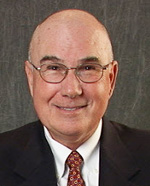Oral Surgery: The Solution to Wisdom Tooth Impaction
Oral Surgery: The Solution to Wisdom Tooth Impaction
Oral Surgery: The Solution to Wisdom Tooth Impaction

Oral surgery is frequently a part of growing up and developing wisdom teeth. Many people don't have the space in their mouths for their wisdom teeth, so the teeth aren't able to come in straight.
Impacted wisdom teeth happen when the developing wisdom tooth pushes into the tooth next to it. This can be quite painful, but some patients don't experience pain and don't realize they have impacted teeth.
That's why wisdom teeth dentists take x-rays. This enables a dentist to see how much the teeth have developed so far and where they look to be headed.
If the patient has impacted wisdom teeth, then the dentist will recommend oral surgery to remove the wisdom teeth. Simple extractions may be performed by a general dentist in his or her office under local anesthesia (like Novocain), but more complex cases will be referred to an oral surgeon.
During wisdom tooth oral surgery, the dental surgeon surgically removes the problematic teeth. (Most people get all four wisdom teeth removed, but that's not true for everyone.) In general, wisdom tooth surgery is easier to perform on younger people, as their wisdom teeth are still developing and haven't fully hardened to bone.
A visit to the wisdom tooth surgeon is not an inevitable part of becoming an adult, but for many people, it's a wise investment in their long-term dental health!

+Jim Du Molin is a leading Internet search expert helping individuals and families connect with the right dentist in their area. Visit his author page.
Oral Surgery for Temporomandibular Joint Dysfunction - TMJ

If you're having problems with TMJ (temporomandibular joint dysfunction), your diagnosis doesn't have to be guesswork. Your dentist or oral surgeon can see joint structures clearly and start your treatment with confidence.
You or someone you know may have had arthroscopic surgery to fix a knee, shoulder or hip injury, especially if the injury was sports related. But more and more dentists and are using this amazing tool for jaw disorders.
The arthroscope is a small microscope that is inserted into the jaw joint to monitor the surgery. We can watch closely as intrusive tissues -- that limit jaw mobility and impinge on nerves -- are cleared away.
Since the arthroscope is less than 2 millimeters, there's no need for sutures
and you won't experience any scarring.
This procedure is done under general anesthesia and requires a short hospital stay. You may also need therapy to limber jaw movement. The good news is that patients who have arthroscopic jaw surgery experience almost immediate relief from their TMJ symptoms and a rapid recovery.

+Jim Du Molin is a leading Internet search expert helping individuals and families connect with the right dentist in their area. Visit his author page.








